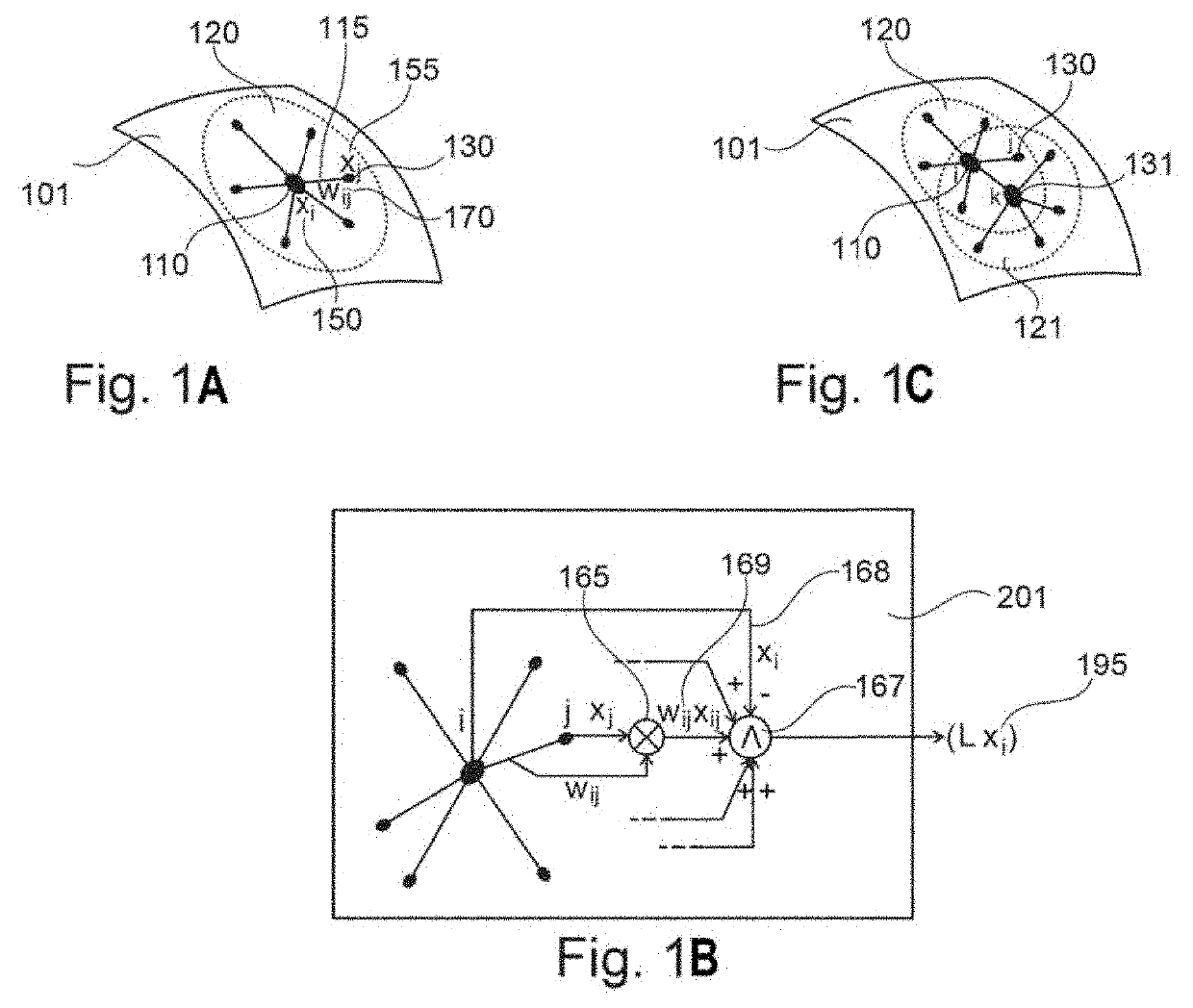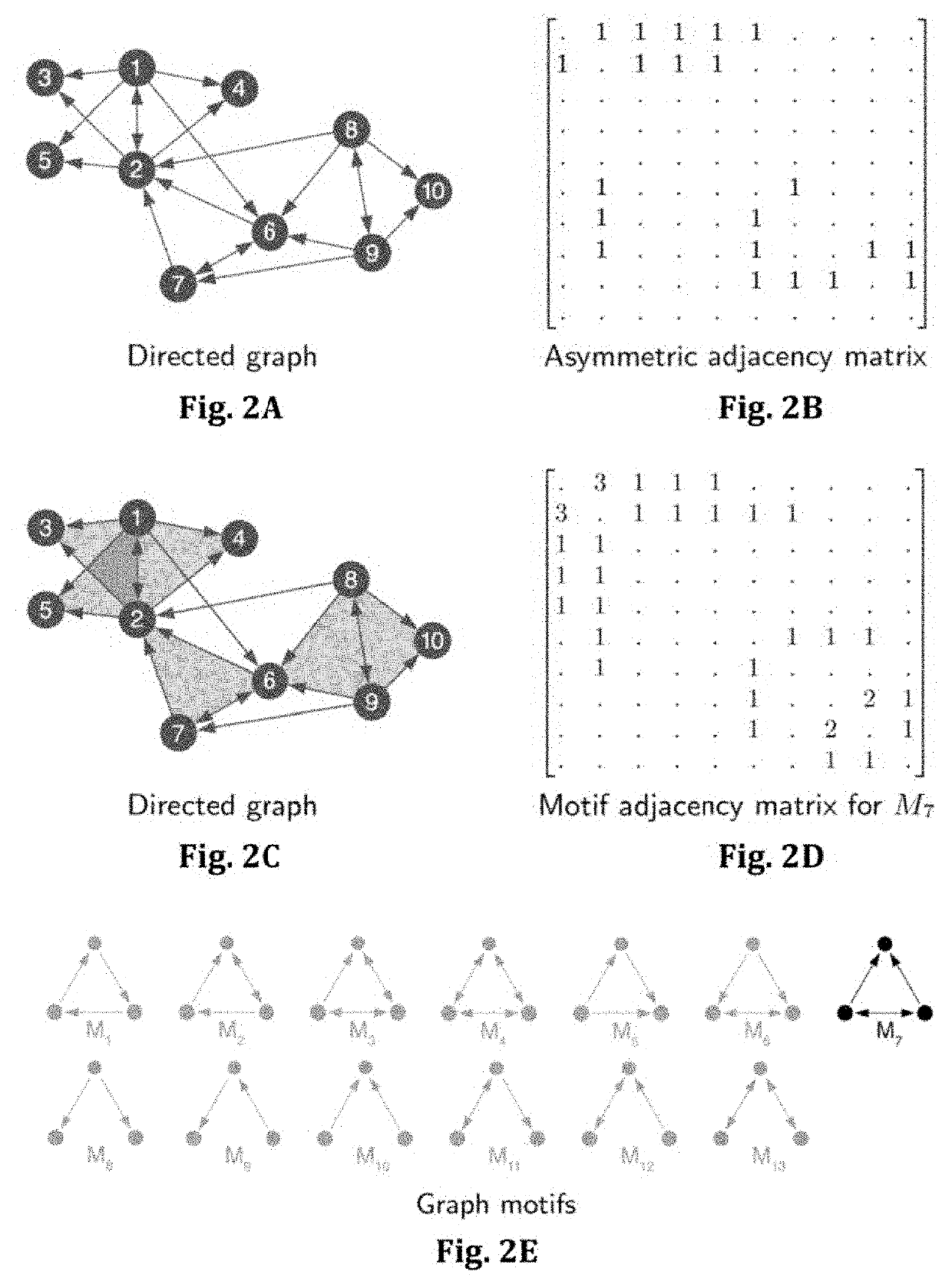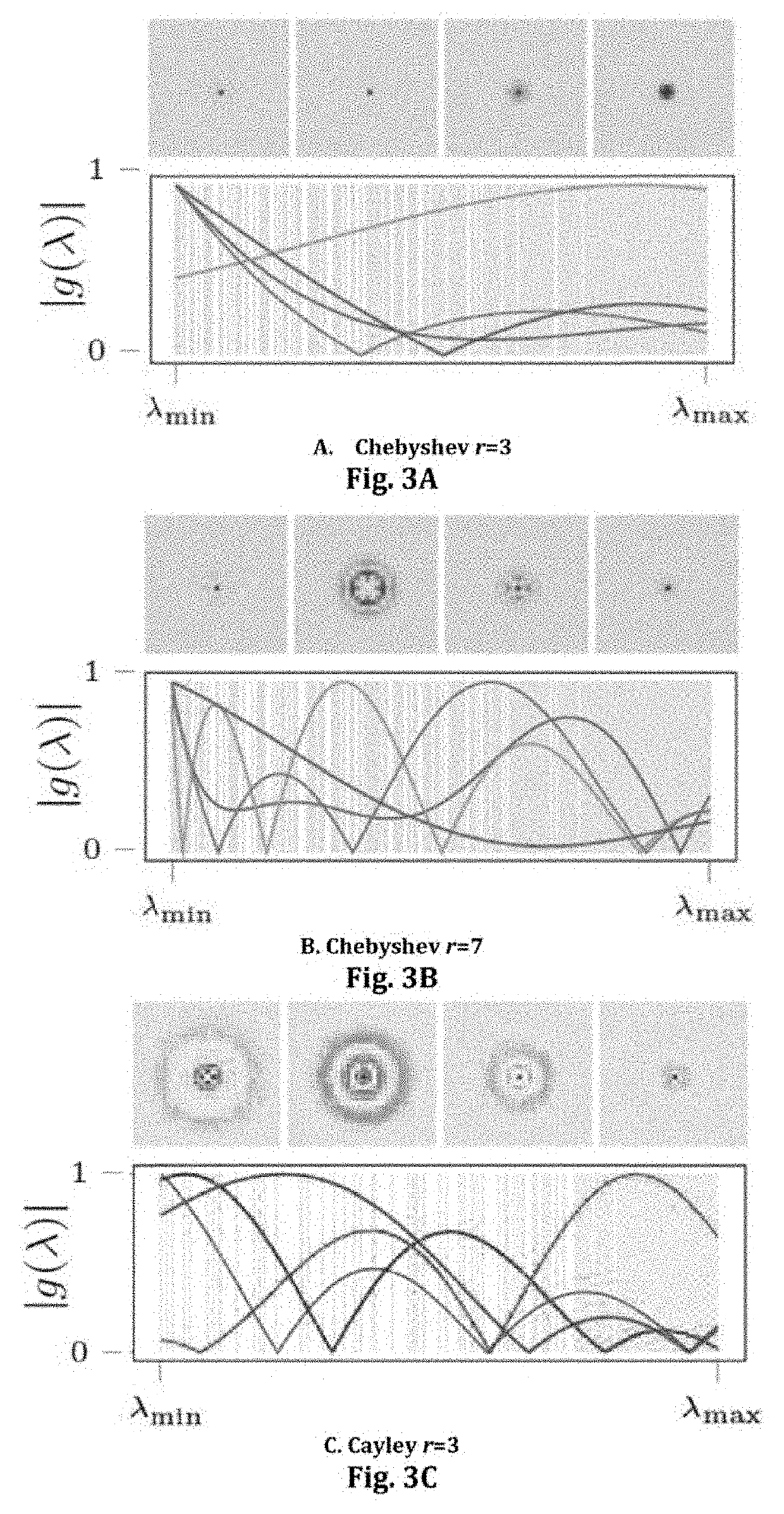Method and system for learning on geometric domains using local operators
a technology of local operators and learning methods, applied in the field of extraction of features from data, can solve the problems of inability to apply spectral analysis techniques or use certain types of data structures or input signals easily, cannot be done, and neither processing nor training would be economically feasible in such a cas
- Summary
- Abstract
- Description
- Claims
- Application Information
AI Technical Summary
Benefits of technology
Problems solved by technology
Method used
Image
Examples
Embodiment Construction
[0143]The present invention will now be described in more detail with respect to preferred embodiments as shown in the figures.
[0144]According to the invention, an important aspect will be explained with respect to FIGS. 10A-10C & 11. According to this aspect, two key components are used in a combined manner, namely a local operator 200 and an operator function 250, where the numbers refer to FIGS. 10A-10C & 11.
[0145]In FIG. 1A, a geometric domain 101 is shown. The domain comprises a number of points such as points with indices i 110 and j 130 and edges (ij) 115 that run between points i 110 and j 130. In FIG. 1A, one point i 110 is shown as a central point together with all points that are connected to i and that are thus for a neighborhood 120 of point i. It will be understood however that the method of the invention is carried out in a manner such that, overall, not only one single point i is considered as a central point but that in a preferred embodiment each point of the domai...
PUM
 Login to View More
Login to View More Abstract
Description
Claims
Application Information
 Login to View More
Login to View More - R&D
- Intellectual Property
- Life Sciences
- Materials
- Tech Scout
- Unparalleled Data Quality
- Higher Quality Content
- 60% Fewer Hallucinations
Browse by: Latest US Patents, China's latest patents, Technical Efficacy Thesaurus, Application Domain, Technology Topic, Popular Technical Reports.
© 2025 PatSnap. All rights reserved.Legal|Privacy policy|Modern Slavery Act Transparency Statement|Sitemap|About US| Contact US: help@patsnap.com



